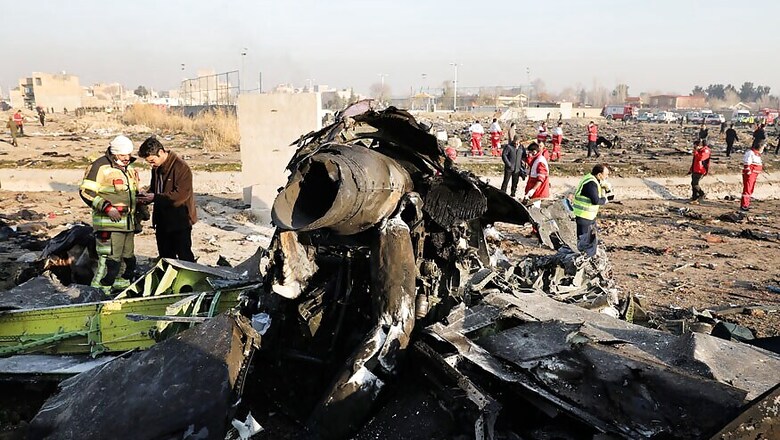
views
Montreal/Kuala Lumpur/Paris: Why was the Ukrainian airliner mistakenly shot down near Tehran by Iranian forces last week for the loss of 176 lives even allowed to take off from a country that had just fired missiles towards its neighbour? And why didn't the airline just delay or cancel the flight? In short, because a century of international air travel has yielded no international agreement on how or when to close airspace; and because airlines often have to rely on their own, sometimes incomplete, assessments to make the call for themselves.
While air travel is global, and guided by streams of instantaneous electronic data, control over each country's airspace remains entirely local and subject to the pace of politics. Iran itself suffered a similar tragedy in 1988 when the US warship Vincennes downed an IranAir passenger jet in 1988.
Ukraine, too, has been acutely aware of the problem since 2014, when Malaysia Airlines MH17 was shot down over territory held by pro-Russian rebels in eastern Ukraine as it flew from Amsterdam to Kuala Lumpur.
MH17 led the United Nations' aviation arm, the International Civil Aviation Organization (ICAO), to launch a conflict zone website where countries could share information on potential risks around the world so that airlines could avoid those regions. Despite the deaths of 298 people, it foundered after some countries saw a threat to their sovereignty and wanted a 72-hour window to respond, rendering it ineffective.
Lack of Trust
Those sensitivities are not new. Few countries trust others to declare their airspace off limits, especially knowing that such decisions can themselves be a product of conflict.
In 1985, Iraq declared Iran off-limits to civil aviation. But Iraq and Iran were then at war, and the move sparked fierce debate at the ICAO. In 2015, the Netherlands, home to two-thirds of the passengers on MH17, tried at least to have the ICAO spell out criteria for when airspace should be closed. Those changes have yet to be made.
Still, ICAO said Dutch recommendations after MH17 helped result in amendments to six annexes to the 1944 Chicago Convention, the basic global agreement on modern aviation.
Since 290 people died on Iran Air 655, over 750 more have now been killed worldwide in attacks on various forms of civil aviation, according to Flight Safety Foundation data.
"Practice shows that states in which there is an ongoing armed conflict will not implement restrictions for their airspace on their own initiative," a Dutch Safety Board report last year said.
An Iranian commander said on Saturday that the Iranian military, which had been ordered to retaliate against US troops in Iraq for the killing of an top Iranian commander by a US drone, had requested a no-fly zone for the Tehran area but had been refused. He did not say why or by whom, and Iran has not commented on its decision to keep Tehran airport open.
It all puts the onus on airlines and other regulators to conduct their own risk assessments.
Yet each relies on different, potentially incomplete, intelligence briefings, and not all regulators have the same power to prevent their airlines - all operating under fierce competitive pressure, flying through conflict zones.

















Comments
0 comment